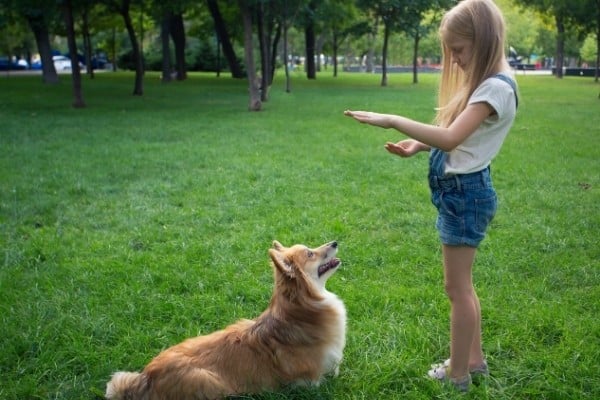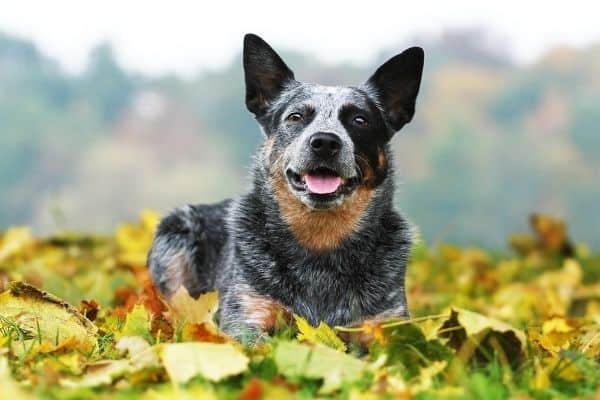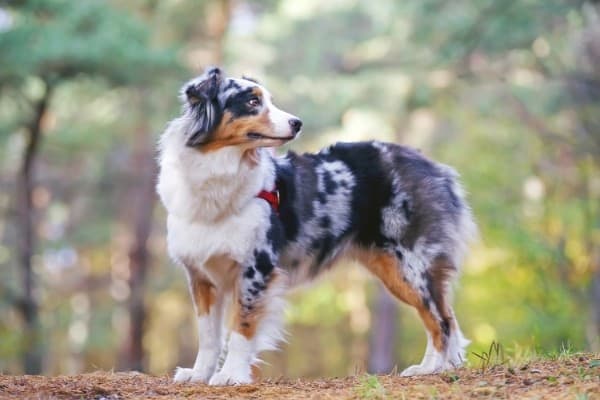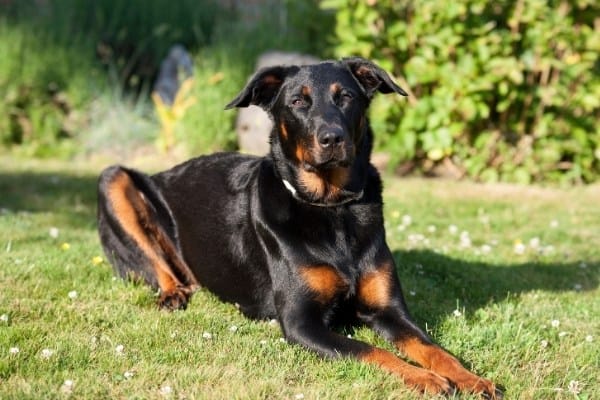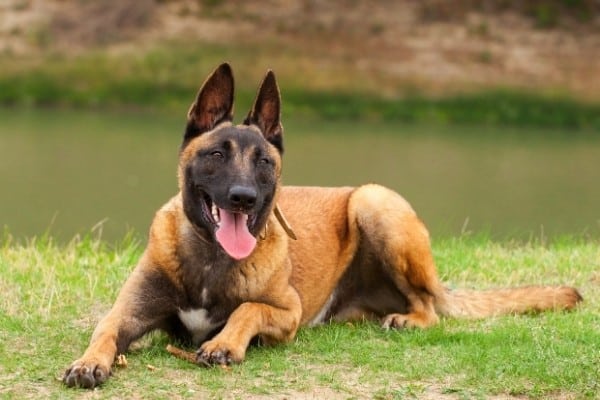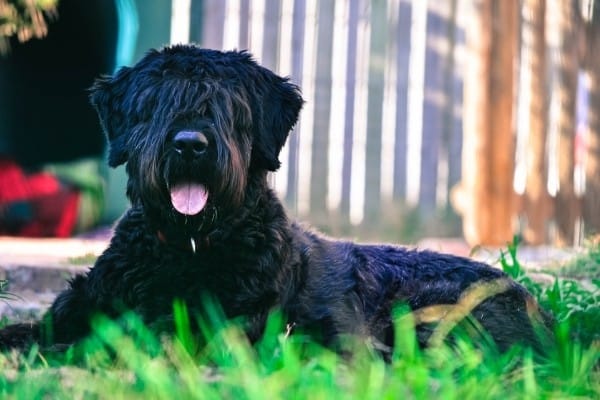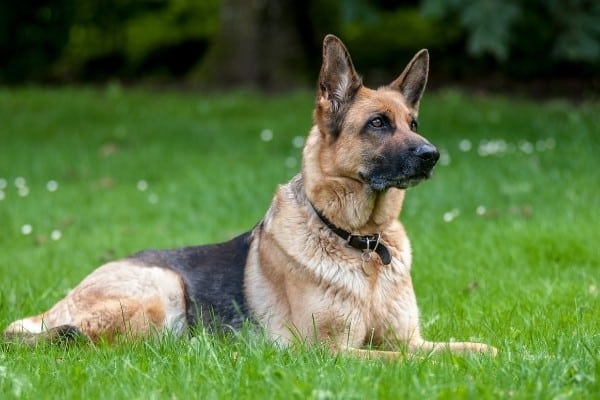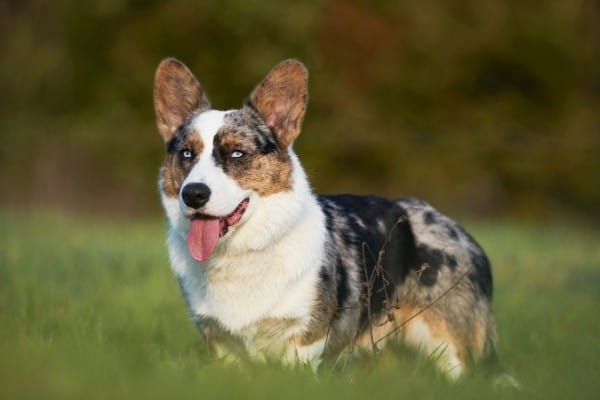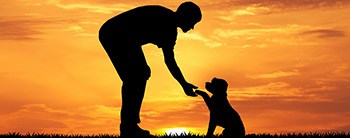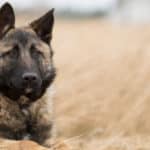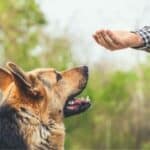If you have taken on cattle dog ownership, you probably are already aware of what a high-octane dog this is and how much training you may need to commit to if you want to have a well-behaved companion.
That said, cattle dog breeds can be excellent pets for the right owner, thanks to their intelligent and eager-to-please natures.
How do you train a cattle dog? Training a cattle dog is similar to training any other dog. Properly socialize from a young age, use a rewards-based training approach, be consistent with commands, provide plenty of exercise, and be patient. Correct any herding or nipping behavior the instant it occurs.
Instincts can be quite strong in dogs with a herding background, but the desire to please their owners can be equally as powerful.
Understanding what these herding dogs were once bred for and how deep their instincts lie is critical to your training approach and the degree of success you’ll experience.
Tips For Training A Cattle Dog
Regardless of what kind of cattle dog you choose, you’ll likely be dealing with a few undesirable traits common to herding breeds.
What Do Cattle Dogs Do?
All cattle dogs share a common purpose of controlling the movements of cattle.
Some are more centered on herding from a distance while others are dedicated to driving cattle from the front by confronting them or nipping their heels.
Here is a training overview of the things to focus on, applicable to whatever kind of cattle dog you get.
Heel Nipping
Some types of cattle herding dogs are more prone to nipping heels than others, but all may occasionally engage in this behavior at some point.
Dogs are more likely to nip the heels of children or groups of people.
They often do it in an attempt to get someone to go somewhere they want them to go, but sometimes the behavior seems to have no particular purpose.
Give your cattle dog excellent recall training with great rewards when they come when they’re called. Never allow them to engage in heel biting.
If you teach your cattle dog to resist the urge to nip heels from a young age, it is much more likely that he will resist the urge when he gets older.
If you cannot restrict the dog, it is important to keep him away from opportunities where he would be tempted to engage in heel nipping, as every successful attempt makes it harder to break the habit.
Prey Drive
Herding is, at its core, an alteration of the instinct to chase and kill. Therefore, many dogs with herding instincts also have prey drive.
Cattle dogs may want to chase and catch smaller animals and may be highly driven to chase large animals like deer.
Training your dog to resist the urge to chase prey is very similar to training them to resist nipping at heels. A solid recall from the time your dog is very young is the foundation of training.
For dogs that have a very strong urge to chase, you may consider an electronic collar, like this one.
Never use the shock feature, as it may cause your dog to respond unpredictably and break trust.
However, tying the vibrate or the beep feature to a reward is a great way to encourage your dog to come back even if they have seen something they want to chase.
A beep or vibration can get through to a highly focused dog where your voice may not.
Over-Excitement and Excessive Energy
Cattle dogs are all high-energy dogs. From the smallest Pembroke Corgi to the giant Bouvier des Flandres, you’ll be dealing with a highly energetic and active dog.
Cattle dogs often tend to mature late, so they may be hyperactive and energetic well into their second and third year.
There is really no way to train a dog to be less excited and energetic, but you can teach them to direct their energy constructively.
Building healthy toy obsessions with play and food-dispensing toys (like this all-time favorite wobbling treat toy) from the time your dog is very young is a great way to encourage him to let their energy and excitement out on toys instead of on you, your guests, or your home.
Always provide your dog with plenty of exercise (find exercise tips and ideas here) and training that tires out their mind to help them to be calm and relaxed in your home.
Cattle Dog Breeds
Exactly how you should train your cattle dog depends, in part, on what kind of cattle dog breed you have.
There are a number of different breeds developed to work with cattle, each of which handle the cattle in different and distinct ways.
Understanding how your dog has been bred to work cattle is fundamental for training success.
Australian Cattle Dog
The Australian cattle dog is perhaps the best known of cattle dogs.
These powerhouses of the dog world were interbred with Dingoes (the famous wild dogs of Australia) early in their history to produce a dog who was better suited to the Australian Outback.
These dogs are extremely healthy, powerful, and intense workers. They handle cattle by confronting them head on and by running over the backs of cattle.
These dogs have an intense herding drive that needs to be channeled from an early age.
Training isn’t optional with an Australian Cattle Dog.
Because they can be reserved with new people and overbearing with other animals, they need to be well socialized from an early age. (We have a complete socialization guide here to help.)
Teaching commands with active obedience and agility work is a good way to channel their desire to chase and herd.
These dogs can keep going with you all day long and are intelligent enough to learn just about anything, provided they are properly motivated.
Because they tend to get bored easily, training sessions need to be fun, varied, and challenging if you are to be successful.
Having a good variety of toys (see our top toy recommendations here) can help them work off extra energy in between training sessions.
These dogs are often not a good fit for young children since they tend to chase and nip at heels, so if you want them around children it’s important to train your dog how to behave properly from a very early age.
Instincts, like prey drive, are also very strong in this dog, so it is important to teach them to behave appropriately around smaller dogs and cats.
The Australian Cattle Dog is an extremely athletic dog that excels in all sorts of sports, agility, and even bite work.
Put your Australian Cattle Dog to work, and you’ll have a much better chance of having a happy, healthy pet.
Australian Shepherd
The Australian Shepherd has a long and somewhat confusing history, but they’ve always been a class A ranch dog.
From Europe to Australia to California, the Australian Shepherd has had a long road to being one of the more popular herding breeds available.
These are beautiful dogs with a wispy, flowing coat and often very interesting markings.
They tend to be a little bit more laid back than some other cattle herding breeds, like the Australian Cattle Dog.
This is a sensitive dog who is very eager to please his owner. However, they have endless energy that can be exhausting for some owners.
For dogs with exorbitant amounts of energy and a love of chasing, games of fetch can help them focus their minds on a single task while wearing them out physically at the same time.
A ball launching device, like this one, can be the perfect solution for people with dogs who have much more energy than they do.
Give your dog the exercise he needs without tiring your arm with repeated throws and straining your back when reaching down to pick up the ball again and again.
Value "thumb image" is not supported.
Australian Shepherds are extremely committed to their people, which makes them prone to separation anxiety when left alone.
They are also prone to destructiveness and hyperactivity without proper outlets.
Since Australian Shepherds are so willing to please their people, you can train them to do most things without having to work hard to motivate them.
Early socialization is essential to train these dogs to respond positively and without fear or shyness to new people and situations.
Like other herding breeds, they may tend to nip at the heels of children, so they should be carefully socialized and taught how to behave properly with children from an early age.
Beauceron
The Beauceron isn’t well known this side of the Atlantic, but in their native France and throughout Europe, they are still fairly popular.
These powerful, big, rugged dogs have performed many jobs besides herding throughout their history.
They have also been bodyguards, soldiers, and beloved companions, especially to women.
They work rather wide around their flock, unlike many other cattle dogs who charge close to the cattle.
This makes them a good option for more flighty breeds of cattle or breeds that cannot be handled as roughly, such as Longhorns.
These highly sensitive dogs respond well to training and are happy to please their owners, but they must be trained consistently with a gentle hand to develop into a happy and healthy dog.
They have a strong protective drive and can be pranksters, so they must be taught how to interact with strangers from an early age.
Belgian Malinois
Belgian Malinois have excelled at a wide range of tasks throughout their long history, including extensive police work.
They are a wickedly smart and incredibly athletic breed of dog known for their antics such as climbing trees and walking across a tightrope.
They are also excellent herders, able to herd even very large cattle despite being a relatively small dog.
Belgian Malinois’ athleticism means they can simply jump over the backs of cattle when they need to.
Ownership of a Belgian Malinois should never be taken lightly. They are extremely energetic dogs who need lots of engagement and activity.
(Learn about proper Belgian Malinois exercise here.)
Because they tend to be reserved with strangers and have strong protective drives, they need to be socialized early.
The Belgian Malinois may be less likely to display classic herding behavior like heel nipping, but they are prone to a high prey drive, which might need to be channeled early in life.
Bouvier des Flandres
If you need a dog who packs a lot of power into a robust frame to handle work in rough conditions and with many cattle, this may be the dog for you.
This powerful, burly dog is an excellent all-around work dog as well as a herder.
They are big enough to handle even the largest cattle, and the rough coat can protect them against all kinds of weather conditions.
These dogs are relatively easy to train provided they are motivated properly.
They have a strong prey drive which should be correctly directed from the beginning of their life. They can also be a bit reserved with strangers, so early socialization is important.
German Shepherd Dog
German Shepherds are extremely versatile workers, and they are as happy to herd cattle as they are to do any of the other jobs for which they are well equipped.
They are larger dogs and tend to be brave, so they do a good job of taking on even very large cattle or big groups.
German Shepherds are extremely intelligent and eager to please their people, so they typically respond well to training with minimal motivation needed to encourage them.
They tend to be reserved with new people, so it’s important to socialize your German Shepherd dog from the time that they are very young.
These energetic dogs can have their own minds, so consistent training is essential from early in their lives.
Interested in this intelligent, popular breed? Click here to learn more and find the answers to commonly asked questions.
Cardigan Welsh Corgi
People are often surprised to learn that the diminutive Cardigan Welsh Corgi was actually bred to herd cattle.
The dog was bred to be short so that he would stay under the heels of the cattle he was nipping.
The Cardigan Welsh Corgi is now a popular pet, thanks to the intelligent and endlessly happy-go-lucky nature.
However, it is important that owners keep in mind this breed’s serious history as a working dog.
They tend to have the same sort of issues as other herding breeds have, such as nipping at heels and having a strong prey drive.
It is important that you take your Cardigan Welsh Corgi seriously and socialize and train him thoroughly from a young age.
Last update on 2024-04-19 at 21:08 / Affiliate links / Images from Amazon Product Advertising API

